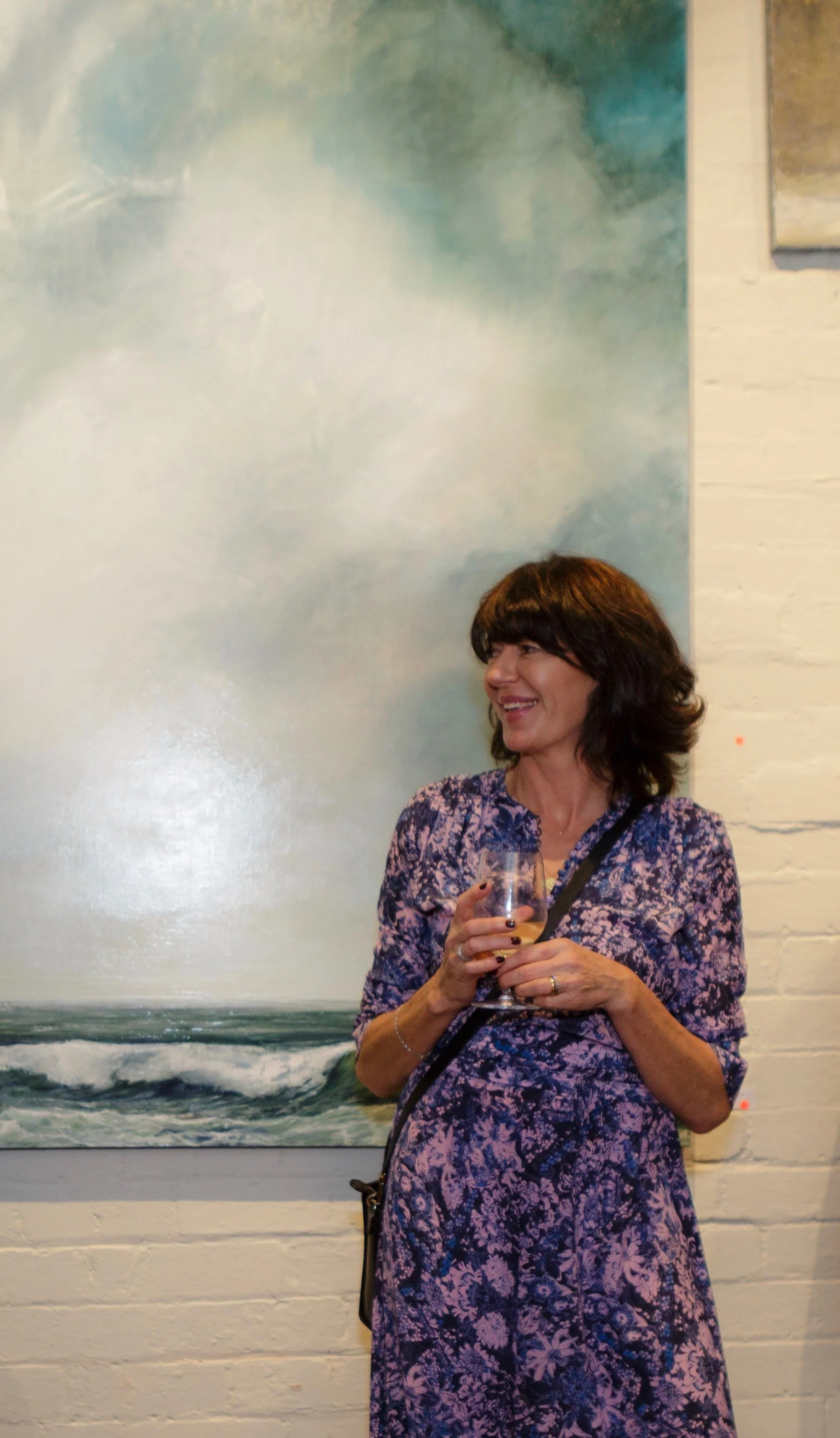Therese Strauss was born in London and studied at the Chelsea School of Art. Though classically educated, Therese spent much of her childhood at sea; her father was a mariner and the family spent every weekend on their ancient sailing boat. This Swallows and Amazons childhood would later become the compass for her work, inciting a love for the ocean and a deep appreciation of her natural surroundings.
While in her twenties, Therese was lent Song Lines, Bruce Chatwin's book on Australia. She was drawn to his evocation of vast landscapes, as well as the endless secret pathways that connect First Nations communities and follow ancient boundaries. She visited Australia as a backpacker to see it for herself, fell in love with its beauty and has stayed ever since.
Hiking in the Otway ranges, Therese became haunted by the power of the mountains falling into Bass Strait — a restless energy that she also finds in herself, an energy that can only be sated by painting. Her early work in Australia gravitated toward the large and abstract, an attempt to find meaning and connection to her new environment and the true, ancient history of the land.
Therese’s paintings continue to evolve as she gets closer to understanding what drives her. She draws inspiration from her adopted Australian surroundings, but her landscapes do not exist in real time — they are a culmination of memories and music, internal sources that she carries with her.
“I want to create a space where the viewer can walk in and ask: "Where am I? What's around the corner? What can I feel here? Where do I want to go?" I am witness to a moment in time, yet, to get there, I pass through many landscapes, compositions, light, and all its history. As I walk, I want to hold that whole experience in my work, each thing I have felt, heard or seen.
I often remind myself that I am here in this tiny moment and what's around me will still exist when I'm gone. I capture a moment, but there are so many transitions to get there. It is the history of the painting, like the history of the earth — constantly changing yet eternal. The flux, transparency and ability to see through the layers in the painting style leaves room for the understanding of change, allowing for glimpses of what's underneath.”
